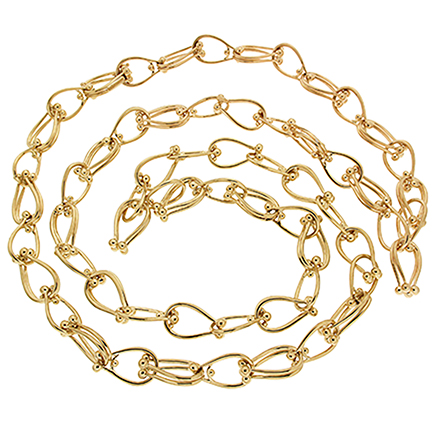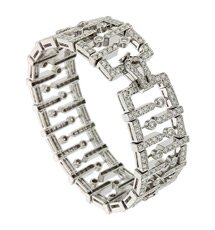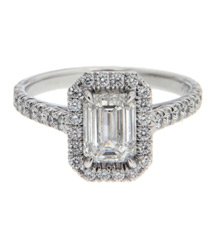How Chains are Made
Jewelry chains can be quite fine and intricate. For ease of maintenance, less reactive metals such as gold and platinum are used. Precious materials also have the advantage of high malleability and ductility. They stretch and compress to impressive degrees, allowing for elaborate creations.
Many chains are on the thin side, necessitating wires to form links. These in turn are made by pulling metal through a series of drawplates. Each plate has a smaller hole than the last, forcing the material to become thinner. Strong ductility, or the ability to stretch without breaking, is a must for the process.
After the wire is made and the individual links completed, it’s time to form the chain. One way is to connect one loop to another, and so on until the desired length. Fancier chains emulate ropes, braids and other textures.
For extra security, links will be soldered closed. This approach has a few challenges. With smaller chains, there must be great care to avoid bonding loops together by accident. The choice of solder may accidentally make the piece too heavy. Advances in technology has reduced these likelihoods.
 The simplest types are made of uniform links, with consistent length and width throughout. A common variation is known as a cable, belcher or rolo chain. This is made of round links joined in a o-o-o style, with alternating elements facing towards or away from the viewer.
The simplest types are made of uniform links, with consistent length and width throughout. A common variation is known as a cable, belcher or rolo chain. This is made of round links joined in a o-o-o style, with alternating elements facing towards or away from the viewer.
Curb chains are made from round or oval components. The chain itself is flattened. This can be accomplished by twisting the links so none stand upright, or by running the piece through rollers. Links may be the same size or varying lengths.
Box chains are also known as briolette chains. They get their name from the square shape of their links. The elements are set close together, forming a line of interlocking cubes. Due to how they’re formed, they can be wider than they are thick.
Figaro chains are a variation on curbs. Their most distinctive feature is the long ovals interspersed among smaller links. The minor pieces may be circular or shorter ovals. Larger elements appear between every two to three petite links.
Jewelry anchor chains emulate those used to raise and lower ship’s anchors. They’re made of oval links with a crossbar through the center. The elements may have consistent or varying sizes, and the chains may be o-o-o or curb style. A version known as maritime chains alternate anchor links with other types.
With the rise of industrial technology came complex chains. The snake chain is made of closely set links designed for great flexibility. Pipe chains are hollow tubes formed out of tightly wrapped metal strips. As with snake chains, they have a high degree of articulation.
Necklace Lengths
Necklace lengths have specific names. Matinee pieces range from twenty-two to twenty-three inches. When worn, they reach the lower décolleté. They may dip further down if weighted by a pendant or similar adornment.
Opera necklaces refer to long chain jewelry between thirty and thirty-six inches. The necklaces rest on the wearer’s sternum. Depending on the design and wearer, they may even hang past the waist.
Ropes are much greater than matinee or opera lengths. They’re thirty-seven inches at their shortest, and can span sixty inches and beyond. A variation of the rope is a lariat. Instead of a clasp, it remains in place through careful draping.





